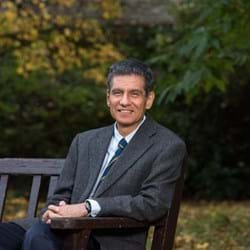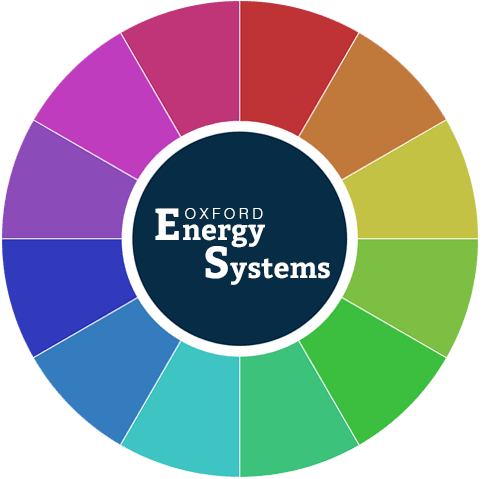Scientific, technical and economic factors in the production of ‘green’ ammonia
- Start Tuesday 24 Apr 2018 6:00pm
- Finish Tuesday 24 Apr 2018 7:00pm
This combined presentation will be given by two independent group leaders from the University of Oxford who have been working collaboratively to address the development of ‘green’ ammonia synthesis [1].
First, Rene Banares-Alcantara (DoES) will set the scene by presenting intermittency as the main challenge in the integration of renewable energy (RE) to the grid, and how energys torage (ES) systems are a possible solution as they can store RE and use it when energy demand is higher than supply. There are two important questions that need to be answered when selecting the most appropriate ES technology: the required amount of energy to be stored, and the required storage duration. The production of ‘green’ ammonia (using hydrogen from RE water electrolysis instead of steam methane reforming) as a long duration energy storage vector will be discussed in this context.
The DoES group has been developing computer models in collaboration with the Tsang group to minimise the levelised cost of ammonia for a given geographical location andto estimate the optimal RE ratio (wind/solar), size of the ammonia production plant and its operation regime (ramping rates). Recent results indicate that the dramatic reduction in RE costs have the potential to produce commercially competitive ‘green’ ammonia with existing technology.
The second part of the presentation will be given by Edman Tsang (DoC), who will present some experimental results for hydrogen production via electrification of water using RE (wind, solar, tidal wave, etc.) with an adaptation to a small scale modified Haber-Bosch process as catalytic eHB. He will also highlight the development of alternative methods of production (i.e. electrochemical).
While designing new ammonia plants with integrated carbon capture and storage (CCS) or retrofitting CCS to conventional plants does have notable potential, the eHB and electrochemical methods will be discussed in this presentation due to the rapid decrease in the cost of renewable energies. He will present some of challenges and opportunities for both the catalytic and electrochemical methods for ‘green’ ammonia production, review their current research status, and evaluate some reported rates and efficiencies with references to his own in-house research and recent US Department of Energy targets.
-
Reaction: “Green” Ammonia Production, Lin Ye, Richard Nayak-Luke, René Bañares-Alcántara, Edman Tsang. CHEM, DOI: 10.1016/j.chempr.2017.10.016
Speakers
 Prof Rene Banares-Alcantara is a Reader in Engineering Science at the University of Oxford. He has a I.Q. degree from the Facultad de Quimica, UNAM (Mexico) and an MSc and PhD from Carnegie Mellon University (Pittsburgh, USA). All of his degrees are in the field of Chemical Engineering.
Prof Rene Banares-Alcantara is a Reader in Engineering Science at the University of Oxford. He has a I.Q. degree from the Facultad de Quimica, UNAM (Mexico) and an MSc and PhD from Carnegie Mellon University (Pittsburgh, USA). All of his degrees are in the field of Chemical Engineering.
His research interests are in the area of Process SystemsEngineering (mainly process design, synthesis and simulation, but also diagnosis and control) and the development of decision support tools. For the last three years he has been involved in projects related to long-term (chemical) storage of renewable energy and the production of ‘green’ ammonia.
 Edman Tsang is a professor of Chemistry and Head of Wolfson Catalysis Centre at the University of Oxford, UK.
Edman Tsang is a professor of Chemistry and Head of Wolfson Catalysis Centre at the University of Oxford, UK.
His main research interests are on nanomaterials and catalysis concerning energy and environment which include developments of catalytic, photocatalytic and electro catalytic technologies for fine chemicals, cleaner combustion, green chemistry, energy storages, processes and production, etc. Particular expertise is in design and architecture of nanocatalysts, which can lead to understanding of catalytic surfaces and interfaces.
Future events
Associated people

Edman Tsang
View Edman's details

